Offgrid Preparation Tropical Storm Preparedness
In This Article
If you’ve been following world news recently, you’ve no doubt heard about Hurricane Patricia, the tropical super-storm that reached record-breaking wind speeds off the coast of Mexico in late October. With up to 200mph sustained winds and gusts up to 245mph, Patricia was literally the most powerful cyclone in recorded human history. To put that into perspective, 200mph wind speeds match the entry-level classification of an F-5 tornado, and unlike a tornado, the hurricane reached well over 500 miles wide. This terrifying storm caused the evacuation of hundreds of miles of Mexico’s western coastline, and even then, the death toll was expected to be staggering in this high-tourism region.
Fortunately, when the storm made landfall on October 23rd, atmospheric and geographic conditions in the Sierra Madre mountain range caused it to dissipate rapidly. Although there was moderate damage to coastline structures and property in Mexico and Central America, current reports state there have been only 6 fatalities directly attributed to Hurricane Patricia, far less than many analysts anticipated.
So, what can we learn from this narrowly-averted large-scale disaster? As with any natural disaster, preparedness and forethought are key. Hurricane Patricia was first detected on October 17th, was named and classified as a tropical storm on October 21st, escalated to Category 5 on October 23rd, and made landfall later that day. It only took 7 days from the storm’s formation to its landfall, and even if you learned about it on the same day as the National Hurricane Center (which is unlikely), one week isn’t enough time to prepare properly. In fact, most hurricane warnings only give 24-36 hours of notice. In order to deal with an event of this magnitude, you’d need to have plans and resources in place well ahead of time. To help you with this process, we’ll be delving into what you need to own and what you need to know below.
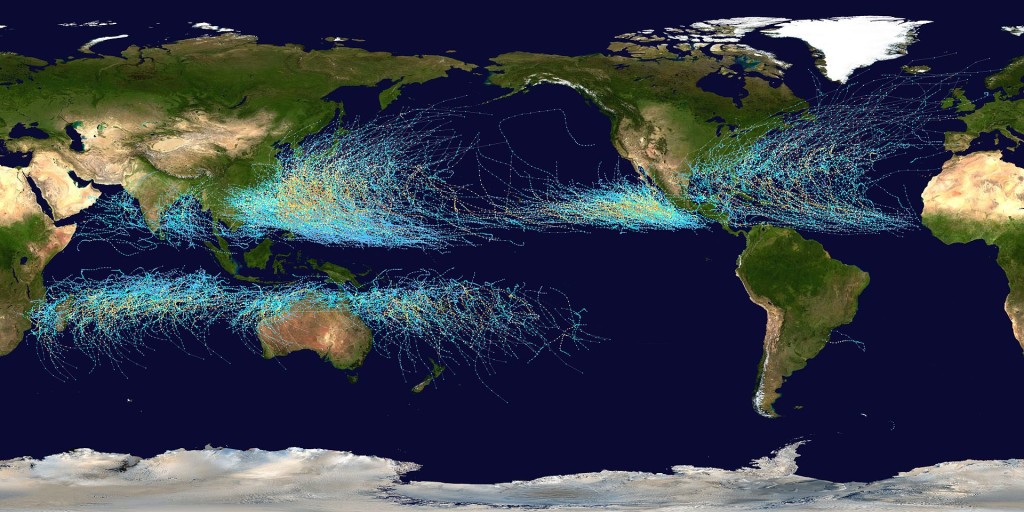
A NASA illustration of the paths of tropical cyclones from 1985-2005. Note the placement at approximately 10-30...

For the record, this article is most applicable to those living in hurricane danger zones, such as the southeast and gulf coast states, Mexico, Central America, southeast Asia, and other regions 10 to 30 degrees of latitude north (or south) of the equator. However, it’s also extremely useful knowledge for anyone who travels to these areas, since as we saw with Hurricane Patricia, many of the worst hurricanes hit areas that happen to be beautiful tropical tourist destinations.
As with most natural disasters, you’ll have two options: hunker down in your home, or bug out to somewhere safer. You’ll need to carefully consider your proximity to the coast and your elevation before deciding which option to choose. A Category 5 hurricane like Patricia can cause over 18-foot-high tidal surge, plus 10-foot waves on top of that, annihilating any structures near the coast and coastal waterways. This surge and rising tide water level can happen a day or more before the actual storm hits, cutting off escape routes and destroying roadways, so you’ll want to know what your storm preparedness plan is well before a hurricane forms.
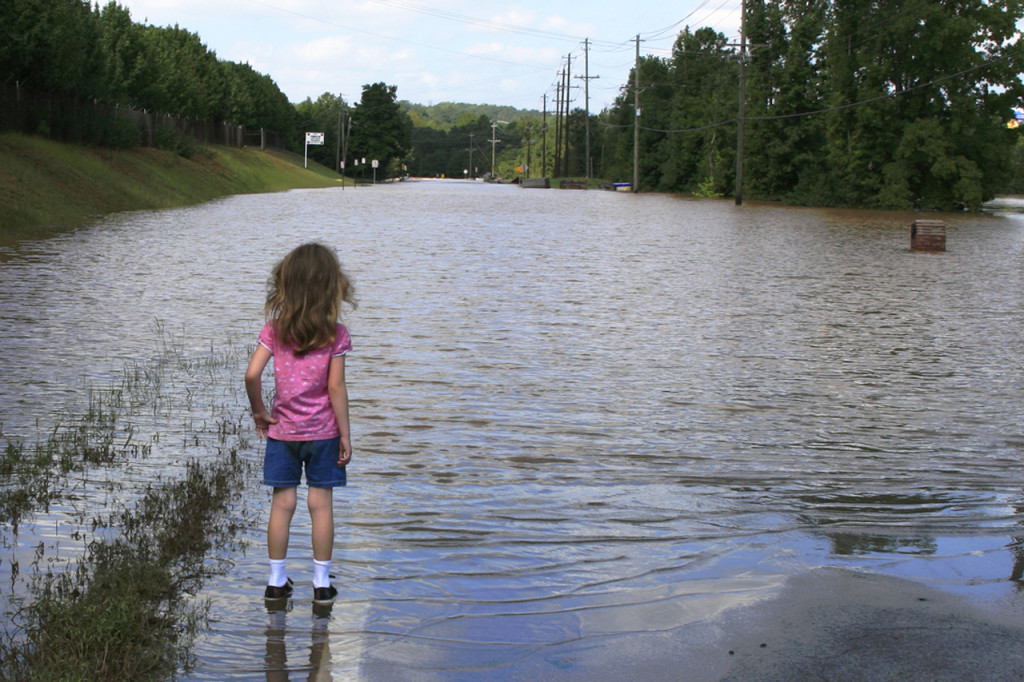
If you determine that your location and elevation make flooding an extremely remote possibility for your area, you can consider hunkering down in your home. This should ONLY be done if you’re virtually certain the tidal surge won’t reach your home, because if the storm intensifies or exceeds predictions, you could end up trapped after it’s too late to escape. Many deaths from hurricanes have occurred due to people refusing to leave their homes, and thinking they can just ride it out—don’t let this be you. However, if you bug in, prepare for extremely high winds and flying debris similar to that of a tornado. Cover all windows with storm shutters or thick plywood, bolt all your doors, and shut off your utilities. Get ready for an extended power outage, begin conserving your resources, and stay in the basement or storm shelter if you have one. Listen to your emergency radio, and wait for reports that the storm is over. Do not venture out because the weather appears temporarily calm.
If you live in a boat or mobile home, are near the coast, or simply aren’t really sure whether you should stay or go, you should evacuate the area as soon as possible, especially if a hurricane watch or warning has been issued. Take your water, food, supplies, and travel inland and to higher ground. If possible, coordinate with local friends or relatives who live outside the danger zone, and plan several routes to their home, avoiding potentially flooded or congested major roadways. Do NOT try to drive across a roadway that has been flooded with deep and/or moving water, as there may be hidden sinkholes formed by erosion or strong currents that could flip your vehicle. If you don’t have local friends or family, plan to meet at a hotel well outside the storm’s danger zone. In a worst-case scenario, you can head for a Red Cross shelter—it’s better than being stranded and exposed, but expect a crowded and uncomfortable stay.
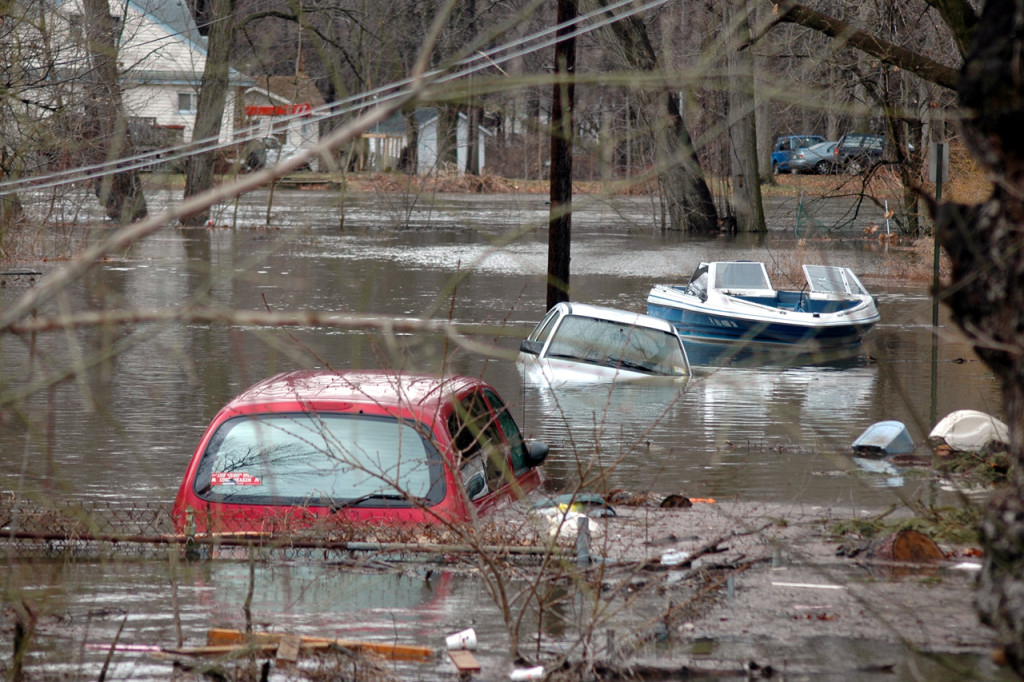
Whether you’re hunkering down or bugging out, there are some things you’ll need to buy in advance, unless you want to be left with only the clothes on your back (hint: you don’t want this). None of these items should be prohibitively expensive, and all of them can be accumulated over time. Don’t be that guy who frantically runs into the local mega-mart days before a storm and tries to empty out the canned food aisle. Nobody likes that guy.
The first item you’ll need is water, and lots of it. During any natural disaster, clean water can become difficult to obtain, and it’s especially true during hurricanes. Rising floodwater and tidal surges can contaminate the local potable water supply, meaning the water that comes out of your tap could contain raw sewage. That’s why clean water is more essential after a hurricane than almost any other type of disaster. Unless you enjoy the prospect of contracting giardia, you’ll want clean drinking water on hand ahead of time. Most sources recommend 1 gallon per adult per day, and given the FEMA response timeline during Hurricane Katrina, you’ll want at least a week or two of water in storage if possible. We also recommend storing a few gallons of water in each of your vehicles at all times, so if you need to evacuate by car, you’ll have it ready. Filling your home’s bathtub and other clean containers with water for washing is a good idea, too.
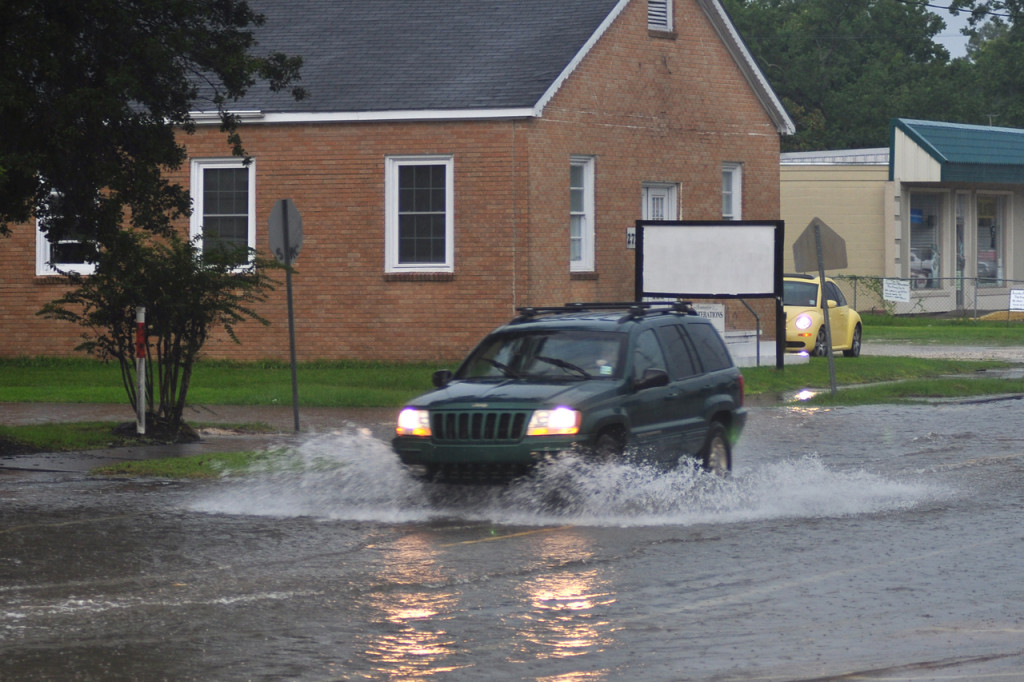
Second, you’ll need other standard disaster preparedness items, such as shelf-stable food, medications, first aid items, hygiene products, clothing, flashlights, and so on. You can view FEMA’s disaster checklist here—although it’s far from perfect, it provides a good starting point for those less experienced. Most of these items are no different for a hurricane than any other natural disaster, such as an earthquake or tornado. However, rain gear becomes more important due to flooding, and you may want a pair of wader overalls or at least tall waterproof boots in case you need to walk through contaminated flood waters (obviously, we don’t recommend traversing flooded areas unless there’s no other option). Also, a VHF-capable portable radio receiver for NOAA (National Oceanic and Atmospheric Administration) weather broadcasts will help you stay informed of conditions and storm severity. A camp stove and generator with sufficient fuel will make life more pleasant if you’re staying at home.
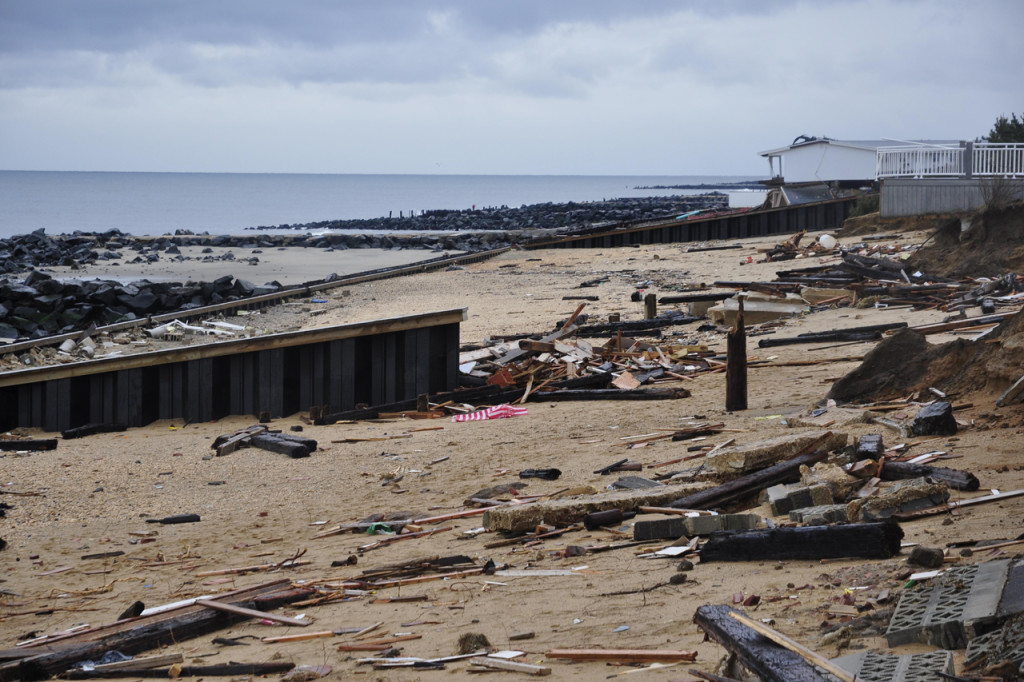
Finally, it’s a good idea to have tools and equipment on hand to protect your home from debris, flooding, and looters. Plywood or metal storm shutters, impact resistant glass, reinforced garage doors, and strong deadbolts on all doors will reduce property damage. Some states, such as Florida, have even provided government-sponsored free storm damage assessments and reinforcement grants for homeowners. You may also want flood insurance on your homeowners’ policy if you live in the danger zone for hurricanes. As we mentioned earlier, shut off your utilities to limit the risk of a gas leak or electrical short. Sometimes, there’s only so much you can do to stop mother nature, so if you do live in these areas, be prepared for the possibility of serious property damage or total loss.
As with most disasters, plan and prepare for the worst, and never expect outside help or rescue. If you need examples of how bad a hurricane can be, just look at Katrina (which, by the way, was only a Category 3 when it made landfall in Louisiana). If you think about what to do ahead of time, prepare your resources, and act decisively when the time comes, you’ll be much better off no matter what happens.
 STAY SAFE: Download a Free copy of the OFFGRID Outbreak Issue
STAY SAFE: Download a Free copy of the OFFGRID Outbreak Issue
No Comments